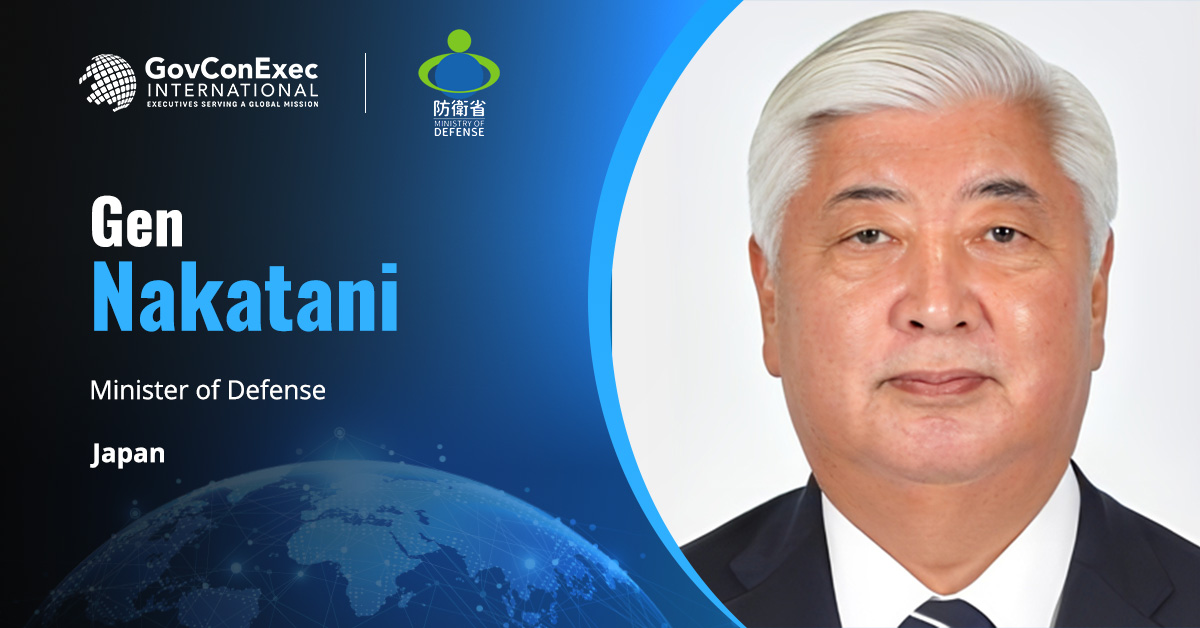Amir Emami has joined L3Harris Technologies as vice president of international b...
Hello, Guest!
Latest Global News

https://japan.kantei.go.jp/102_ishiba/meibo/daijin/nakatani_gen_e.html
Japan’s Eye on China As It Opens Southwest Camp for Osprey Helicopters
The Japanese government has opened Camp Saga southwest of the country as the per...

Photo by aboodi vesakaran
Belgium Unveils $2.7B Ammunition Plan to Meet NATO Defense Goals
Belgium has announced a record $2.7 billion ammunition procurement plan, the lar...
News Briefing
Top GovCon News
July 11, 2025July 11, 20250
Shield AI to Power Netherlands ISR Operations With UAS Offering
July 10, 2025July 10, 20250
IonQ Named Primary Tech Provider for South Korea’s National Quantum Center
July 10, 2025July 10, 20250
Nammo, Rheinmetall to Supply $500M Worth of Ammunition to Sweden
July 9, 2025July 9, 20250
BlackSky Grants International Client Gen-3 Satellite Access to Support Ukraine
July 9, 2025July 9, 20250
Parsons Wins Contract to Oversee Dubai Metro Blue Line Development
July 9, 2025July 9, 20250
Maxar Secures $205M Contracts in Middle East, Africa for Sovereign GEOINT
July 2, 2025July 2, 20250
Planet Labs Secures $280M Funding From Germany to Deliver Real-Time GEOINT
July 1, 2025July 1, 20251
US OKs $510M Israeli Purchase of Boeing Munition Guidance Kits
GovConExec Interviews
Featured Stories

John Healey Official Cabinet Portrait, July 2024 by Lauren Hurley / No 10 Downing Street, https://www.flickr.com/photos/number10gov, Creative Commons license: Attribution-NonCommercial-NoDerivs 2.0 Generic
July 11, 2025July 11, 2025
UK and France Forge New Defense Agreement for...
The United Kingdom and France have signed an agreement to increase the procureme...

Brandon Tseng / Shield AI
July 11, 2025July 11, 2025
Shield AI to Power Netherlands ISR Operations...
Shield AI has received an order from the Netherlands for eight V-BAT unmanned ai...

Image by zapp2photo/Adobe Stock
July 10, 2025July 10, 2025
IonQ Named Primary Tech Provider for South Ko...
The Korea Institute of Science and Technology Information has named IonQ its pri...

July 10, 2025July 10, 2025
Redwire Partners With Japan Startup to Advanc...
Redwire has signed a memorandum of understanding with Tokyo-based startup SpaceD...

Dell Technologies by ™/®Dell Technologies, Licensed under CC0
July 09, 2025July 9, 2025
Dell Technologies Issues Recommendations for ...
Dell Technologies has released a strategic blueprint with recommendations for th...

Brian O'Toole / BlackSky Technology
July 09, 2025July 9, 2025
BlackSky Grants International Client Gen-3 Sa...
BlackSky Technology has secured a new contract with an international customer th...


